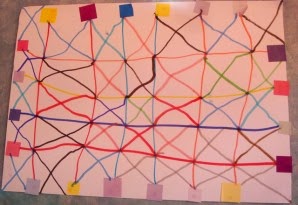With these activities you can create a positive group atmosphere and help children to relax among others.
THE TOILET PAPER ACTIVITY
Material: a roll of toilet paper
The very first day of class, just after introducing oneself, the teacher takes out a roll of toilet paper. This situation is obviously not expected by students so reactions are quite peculiar.
Tell children to take some pieces of this paper (as many as they want). When everybody has their pieces, the teacher will tell them to speak about them in order to know each other a bit better. They will have to say as many sentences (short pieces of information) about themselves as pieces of paper they got.
It’s a funny way to introduce each one on the first day and also a nearly exact clue to check the kind of students you have in the class: the timid one, the cheeky one, the “chatter box”… and so on. Careful with prejudices!
TIME CAPSULE ACTIVITY
Material: empty Pringles can (or similar)
First we ask them to bring an empty Pringles can (or similar) from home to decorate as a "Time Capsule."We cover the cans with paper, on which the children draw pictures and write their names.
Then, we distribute copies where they have to fill the gap giving personal information, talking about their hobbies.... They will place their papers into their time capsule and have a little ceremony to put them away until the end of the year.
*** In order to learn a little more about each student's interests and abilities we can open them, when we're alone.
At the end of the year have the kids complete the same sheets and then open their time capsule to compare how they have changed during the school year.
SNOWBALL FIGHT
We ask students to write on a full sheet of a paper a question that they would want to ask people in class in order to know them better.
We divide the class into two groups (by counting out 1 and 2, picking a card/stick with a certain colour, etc.). The two groups stand in the opposite ends of the class.
The students have to fold the paper with their questions into a ball and we invite them to throw their paper at the other group. Students should be advised to avoid throwing the paper balls as high as the face.
At a certain signal we stop the games and ask students to pick up one of the balls and go to their seats. When all students are back in their seats, we invite them to open the balls (one at a time), read the question on that paper and answer it.
You can find more activities...


























